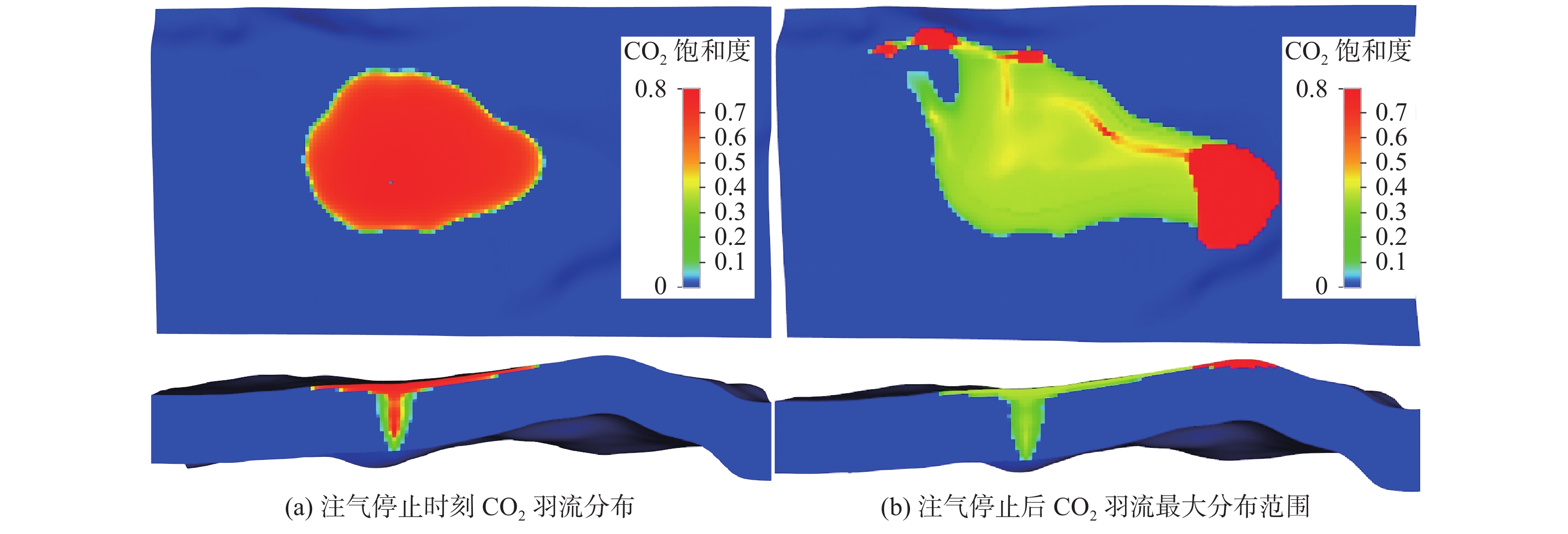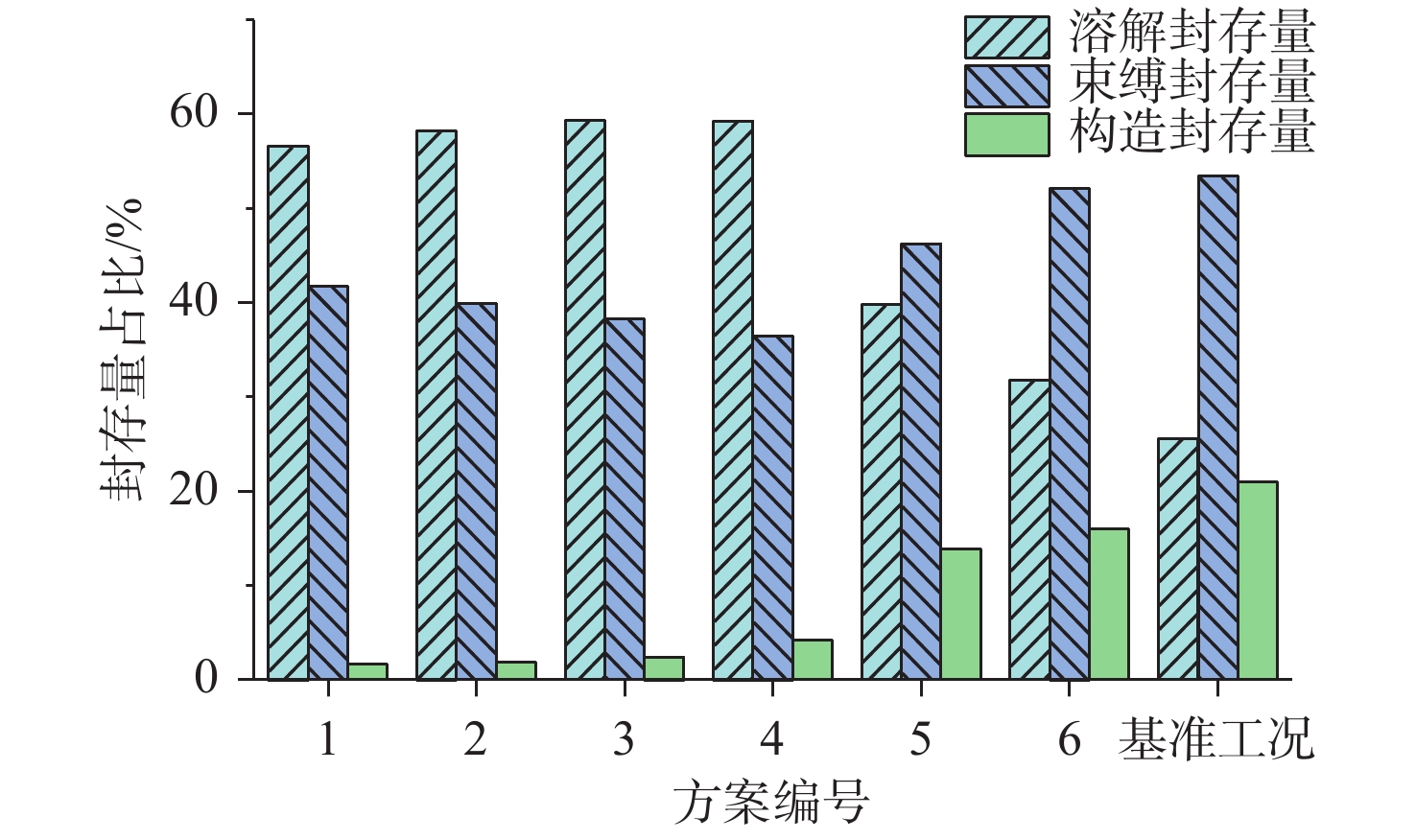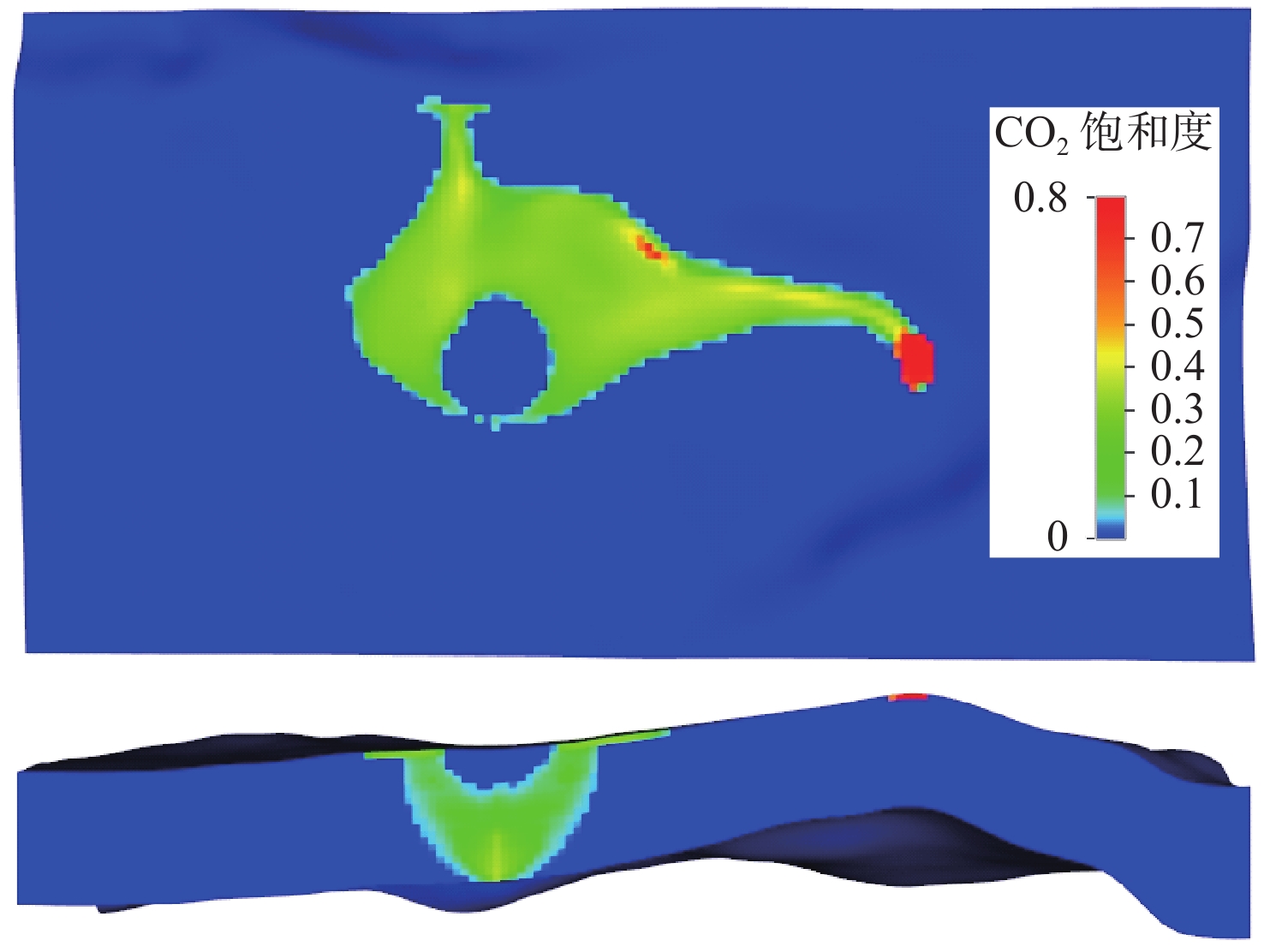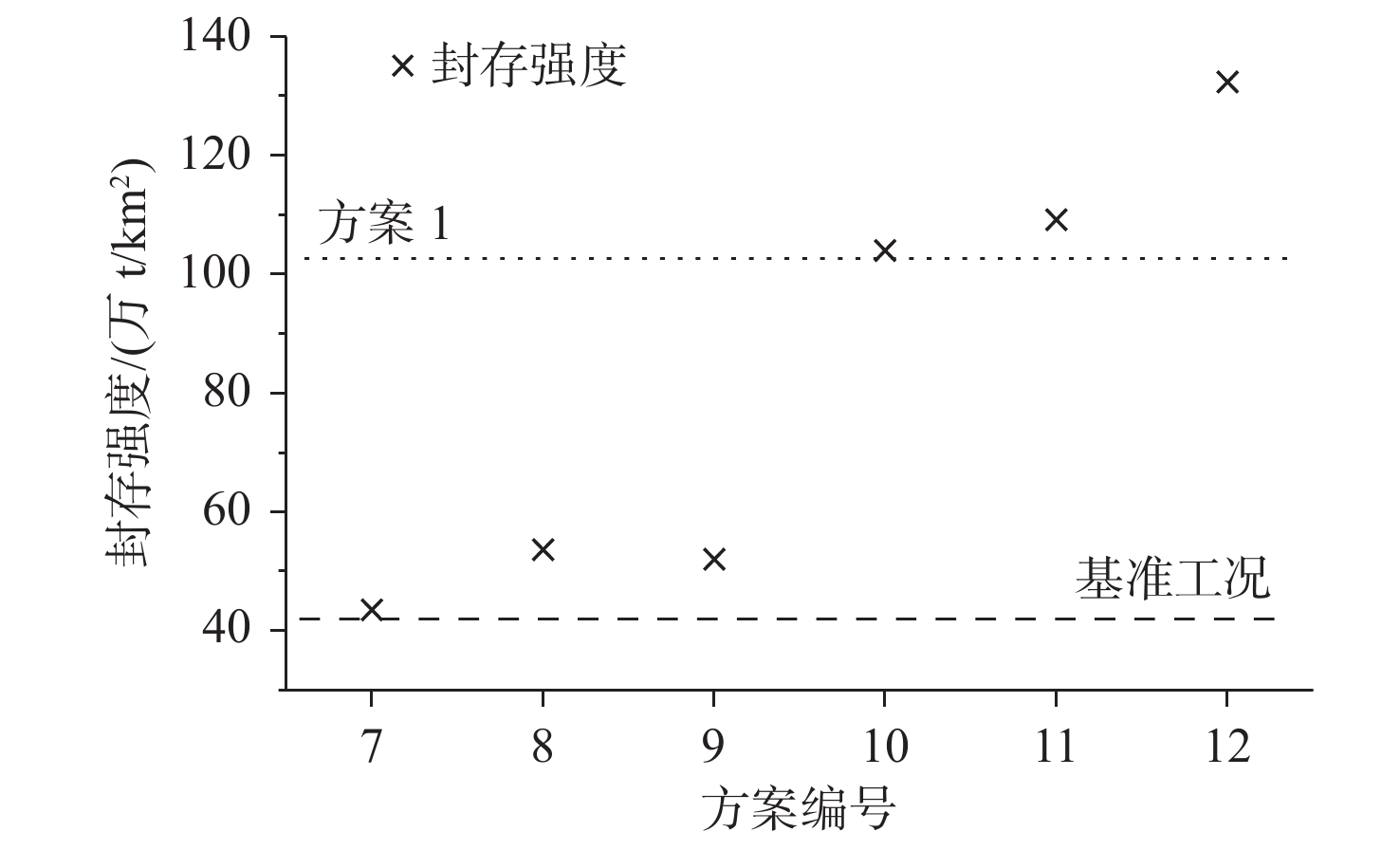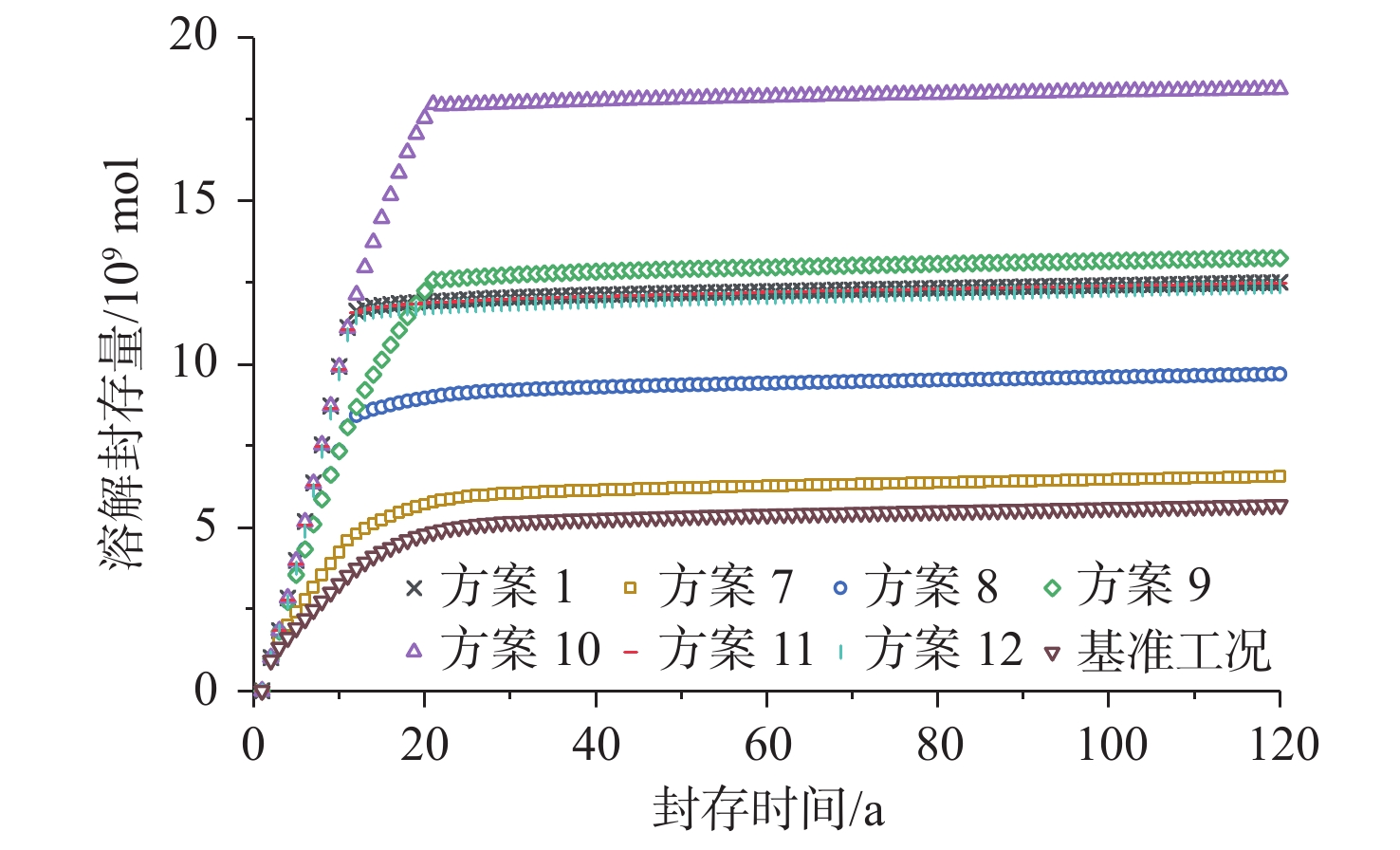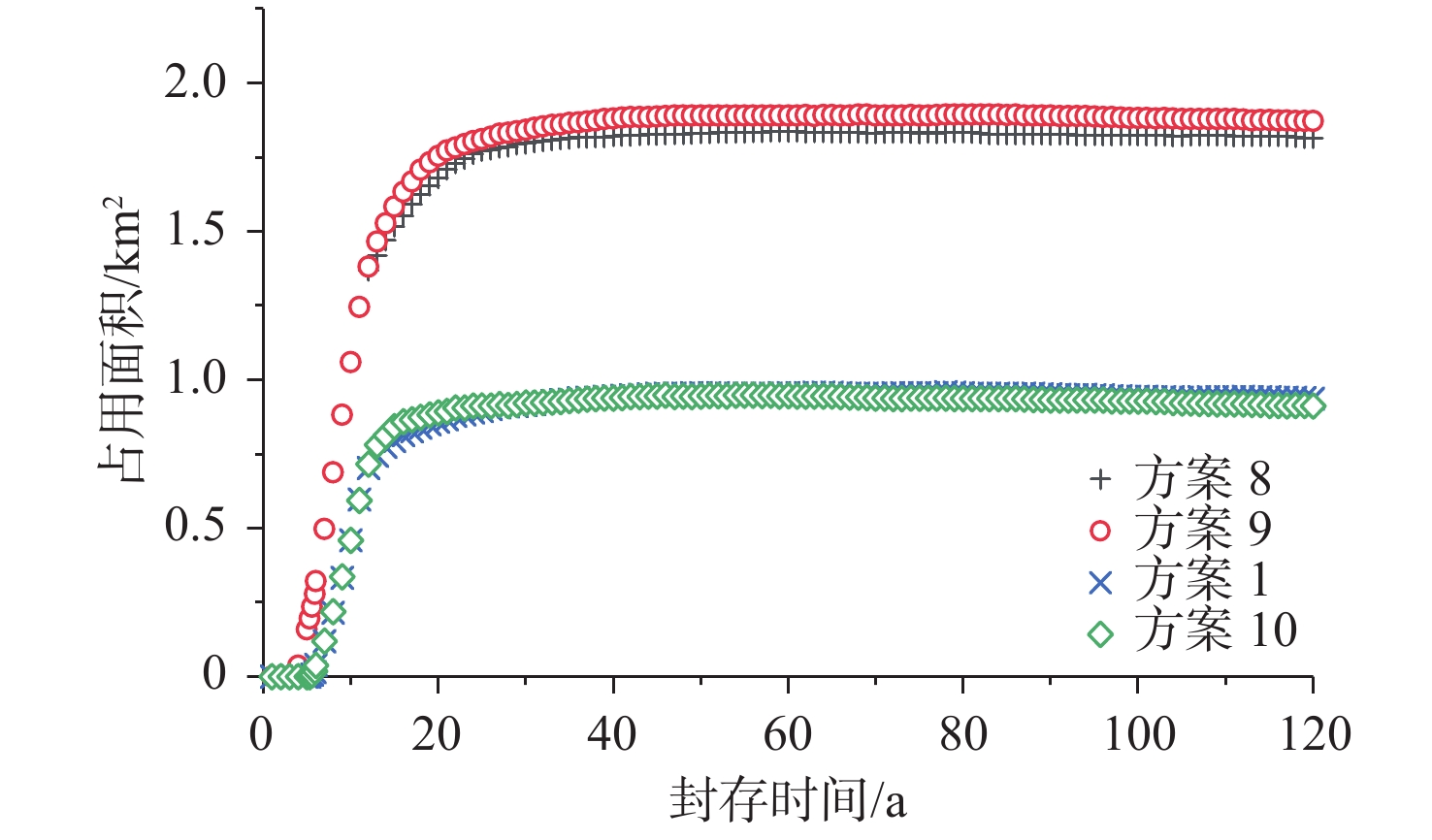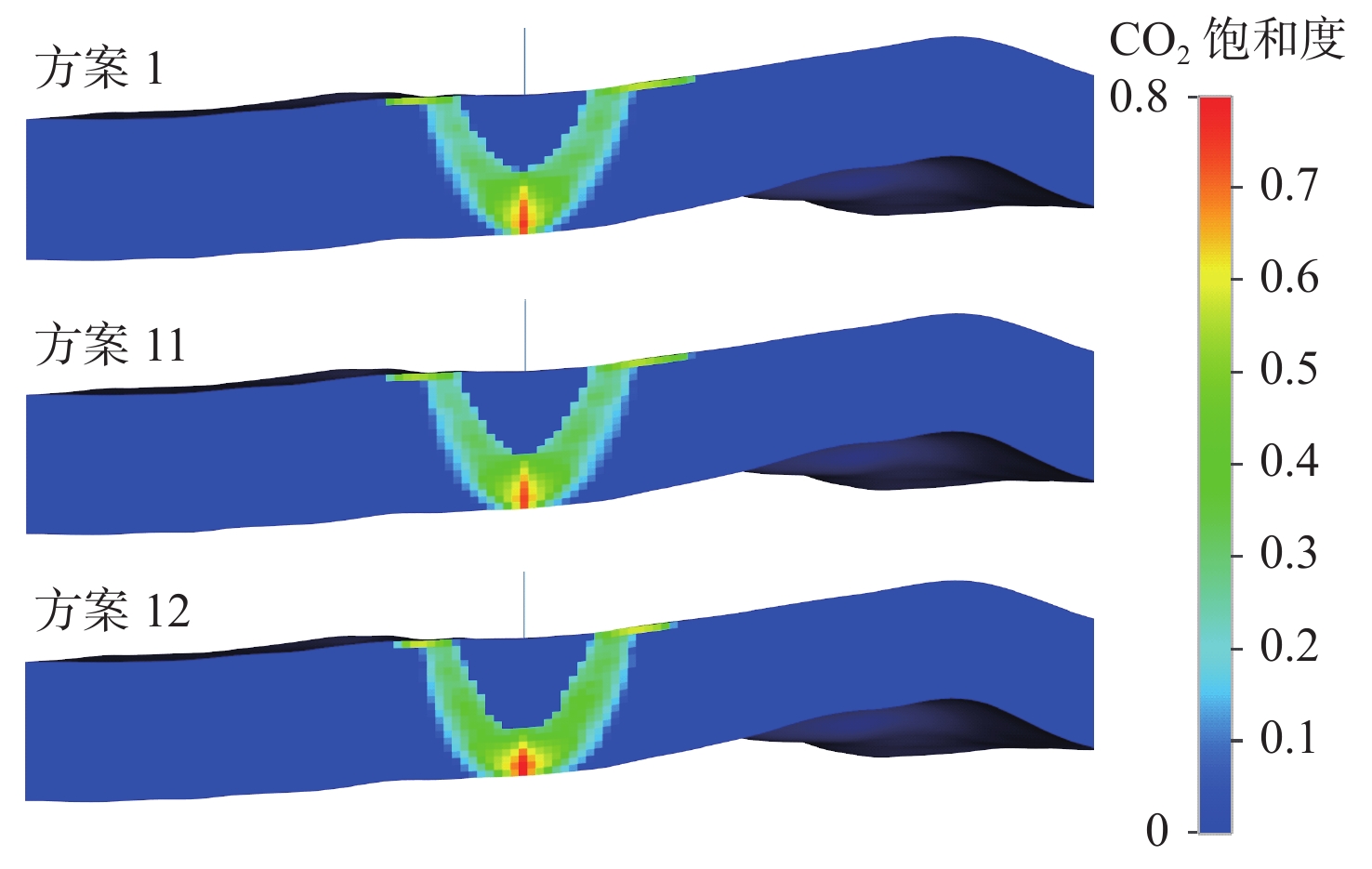The impact of water injection simulation on CO2 storage capacity in offshore saline aquifers
-
摘要:
连续或交替向咸水层注水能够加速CO2溶解并提高CO2咸水层封存安全性,同时也会干扰CO2羽流空间发展从而间接影响地层实际封存能力,目前,工程方案对此问题的考虑还较少。本文模拟了开放式咸水层单井注气作业条件下,多种注水方案以及关键工艺参数对封存安全性和地层实际封存能力的影响。结果表明,注气开始后一段时间内通过在注气井段上方持续注水能够显著提高CO2封存强度,增加地层实际封存能力,开始注水时刻越晚,封存强度提升作用越小;同步注水速率越大,实际封存能力提升越明显;停止注气后继续延长注水时间对实际封存能力的影响需要结合实际工况讨论;在注水总量一定的前提下,注气阶段高速率注水比低速率延长时间注水对实际封存能力的提升效果更好;随着注水层位与底部注气层位间距的减小,注水对实际封存能力的提升作用增强;注水还能够有效降低注入井附近地层中CO2的饱和度,有利于降低井筒泄露风险。
Abstract:Continuous or alternating water injection into saline aquifers can accelerate CO2 dissolution and increase the safety of CO2 storage. However, the hydrodynamic effect may interfere with the development of CO2 plumes, affecting indirectly the actual storage capacity of the aquifer, to which available engineering solution remain very limited. We studied the potential water injection strategies and the influence of key operational parameters on the storage safety and capacity during CO2 injection using a single well in an open saline aquifer. Results show that continuous water injection above the gas injection layer after a certain period could enhance significantly the storage intensity and increase the capacity. The early the water injection starts, the better the results. The storage capacity increases with the increase in water injection rate during gas injection. The temporal effect of water injection post gas injection on storage capacity needs to be evaluated case by case. Under a given total water injection volume, high-rate water injection during gas injection is more effective to enhance the storage capacity than low-rate and prolonged water injection. Reducing the spatial interval between the water injection layer and gas injection layer could enhance the actual storage capacity. Meanwhile, water injection could effectively reduce the CO2 saturation near the injection well, and mitigate the risk of wellbore leakage.
-
Key words:
- CO2 geological storage /
- water injection /
- storage capacity /
- storage safety /
- operational parameters
-

-
表 1 注水方案对比
Table 1. Water injection schemes for simulation
方案
编号注水速率
(水气质量比)注水段 注水时机 注水时长/a 1 10 1 同步持续注水 10 2 10 1 注气1 a开始注水 10 3 10 1 注气2 a开始注水 10 4 10 1 注气5 a开始注水 10 5 10 1 停止注气开始注水 10 6 10 2 停止注气开始注水 10 表 2 注水工艺参数设置
Table 2. Parameter setting for the simulation of water injection
方案
编号注水速率
(水气质量比)注水段位置 注水时长/a 7 1 同方案1 10 8 5 同方案1 10 9 5 同方案1 20 10 10 同方案1 20 11 10 减小10 m 10 12 10 减小20 m 10 -
[1] 叶航,郝宁,刘琦. CO2咸水层封存关键参数及其实验表征技术研究进展[J]. 发电技术,2022,43(4):562-573. doi: 10.12096/j.2096-4528.pgt.22090
YE H,HAO N,LIU Q. Review on key parameters and characterization technology of CO2 sequestration mechanism in saline aquifers[J]. Power Generation Technology,2022,43(4):562-573. doi: 10.12096/j.2096-4528.pgt.22090
[2] 张贤,杨晓亮,鲁玺,等. 中国CO2捕集利用与封存(CCUS)年度报告(2023)[R]. 北京:中国21世纪议程管理中心,全球碳捕集与封存研究院,清华大学,2023.
ZHANG X,YANG X L,LU X,et al. Annual report on carbon capture,utilization and storage (CCUS) in China (2023)[R]. Beijing:The Administrative Center for China’s Agenda 21,Global CCS Institute,Tsinghua University,2023.
[3] ZHANG D X,SONG J. Mechanisms for geological carbon sequestration[J]. Procedia IUTAM,2014,10:319-327. doi: 10.1016/j.piutam.2014.01.027
[4] ABIDOYE L K,KHUDAIDA K J,DAS D B. Geological carbon sequestration in the context of two-phase flow in porous media: a review[J]. Critical Reviews in Environmental Science and Technology,2015,45:1105-1147. doi: 10.1080/10643389.2014.924184
[5] ANDREANI M,LUQUOT L,GOUZE P,et al. Experimental study of carbon sequestration reactions controlled by the percolation of CO2-rich brine through peridotites[J]. Environmental Science & Technology,2009,43(4):1226-1231.
[6] KUMAR S,FOROOZESH J,EDLMANN K,et al. A comprehensive review of value-added CO2 sequestration in subsurface saline aquifers[J]. Journal of Natural Gas Science and Engineering,2020,81:103437. doi: 10.1016/j.jngse.2020.103437
[7] SIFUENTES W,BLUNT M J,GIDDINS M A. Modeling CO2 storage in aquifers:assessing the key contributors to uncertainty[C]//Society of Petroleum Engineers Offshore Europe Conference and Exhibition. Society of Petroleum Engineers,2009:SPE-123582-MS.
[8] LI X,AKBARABADI M,KARPYN Z T,et al. Experimental investigation of carbon dioxide trapping due to capillary retention in saline aquifers[J]. Geofluids,2015,15(4):563-576.
[9] LEONENKO Y,KEITH D W. Reservoir engineering to accelerate the dissolution of CO2 stored in aquifers[J]. Environmental Science & Technology,2008,42(8):2742-2747.
[10] HASSAN H,MEHRAN P,DAVID W K. Accelerating CO2 dissolution in saline aquifers for geological storages mechanistic and sensitivity studies[J]. Energy & Fuels,2009,23:3328-3336.
[11] 王涛,于海洋,朱旭晨,等. 水气交替CO2咸水层地质封存数值模拟研究[J]. 中国海上油气,2023,35(4):198-204.
WANG T,YU H Y,ZHU X C,et al. Numerical simulation study on geological storage of CO2 insaline aquifer sassisted by water alternating gas[J]. China Offshore Oil and Gas,2023,35(4):198-204.
[12] SHARIATIPOUR S M,MACKAY E J,PICKUP G E. An engineering solution for CO2 injection in saline aquifers[J]. International Journal of Greenhouse Gas Control,2016,53:98-105. doi: 10.1016/j.ijggc.2016.06.006
[13] RATHNAWEERA T D,RANJITH P G,PERERA M S A,et al. Influence of CO2-brine co-injection on CO2 storage capacity enhancement in deep saline aquifers:an experimental study on Hawkesbury sandstone formation[J]. Energy & Fuels,2016,30(5):4229-4243.
[14] CHADWICK R A,NOY D,ARTS R,et al. Latest time-lapse seismic data from Sleipner yield new insights into CO2 plume development[J]. Energy Procedia,2009,1(1):2103-2110. doi: 10.1016/j.egypro.2009.01.274
[15] BACHU S,BONIJOLY D,BRADSHAW J,et al. CO2 storage capacity estimation:methodology and gaps[J]. International Journal of Greenhouse Gas Control,2007,1(4):430-443. doi: 10.1016/S1750-5836(07)00086-2
[16] ZHOU Q,BIRKHOLZER J T,TSANG C F,et al. A method for quick assessment of CO2 storage capacity in closed and semi-closed saline formations[J]. International Journal of Greenhouse gas control,2008,2(4):626-639. doi: 10.1016/j.ijggc.2008.02.004
[17] RINGROSE P S,MECKEL T A. Maturing global CO2 storage resources on offshore continental margins to achieve 2DS emissions reductions[J]. Scientific Reports,2019,9(1):1-10. doi: 10.1038/s41598-018-37186-2
[18] GRUDE S,LANDRø M,DVORKIN J. Pressure effects caused by CO2 injection in the Tubåen Fm. ,the Snøhvit field[J]. International Journal of Greenhouse Gas Control,2014,27:178-187.
[19] 米立军. 全球海上CO2封存现状及中国近海机遇与挑战[J]. 中国海上油气,2023,35(1):123-135.
MI L J. Current status of global CO2 ocean sequestration and opportunities and challenges in China offshore areas[J]. China Offshore Oil and Gas,2023,35(1):123-135.
[20] 李小春,梅开元,蔡雨娜,等. 提高CO2封存强度的多层协同抽注技术[J]. 工程科学与技术,2022,54(1):167-176.
LI X C,MEI K Y,CAI Y N,et al. Improvement of CO2 sequestration intension with collaborative pumping-injection technologies in multi-formations[J]. Advanced Engineering Sciences,2022,54(1):167-176.
[21] EDEM D E,ABBA M K,NOURIAN A,et al. Experimental study on the interplay between different brine types/concentrations and CO2 injectivity for effective CO2 storage in deep saline aquifers[J]. Sustainability,2022,14(2):986. doi: 10.3390/su14020986
-



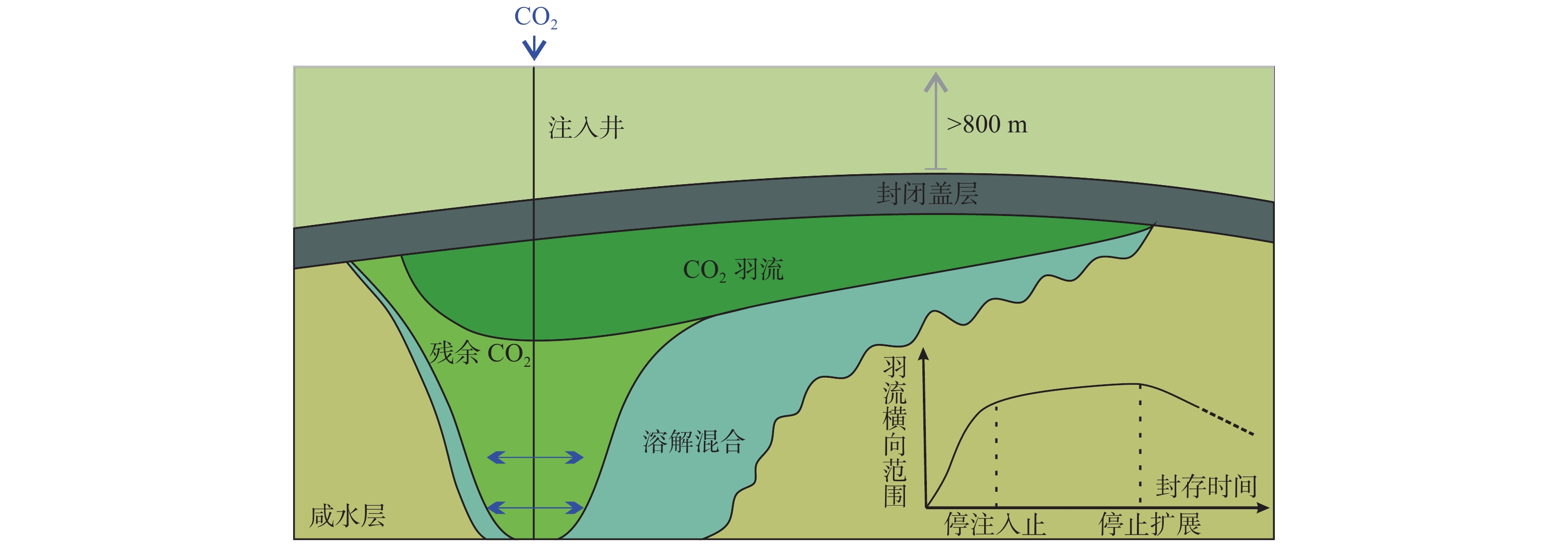
 下载:
下载:

